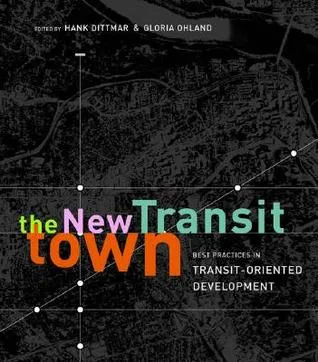The New Transit Town: Best Practices In Transit-Oriented Development
By (author): "Hank Dittmar, Hank Dittmar"
ISBN1559631171
ISBN139781559631174
AsinThe New Transit Town: Best Practices In Transit-Oriented Development
Original titleThe New Transit Town: Best Practices In Transit-Oriented Development
Transit-oriented development (TOD) seeks to maximize access to mass transit and nonmotorized transportation with centrally located rail or bus stations surrounded by relatively high-density commercial and residential development. New Urbanists and smart growth proponents have embraced the concept and interest in TOD is growing, both in the United States and around the world.New Transit Town brings together leading experts in planning, transportation, and sustainable design—including Scott Bernstein, Peter Calthorpe, Jim Daisa, Sharon Feigon, Ellen Greenberg, David Hoyt, Dennis Leach, and Shelley Poticha—to examine the first generation of TOD projects and derive lessons for the next generation. It offers topic chapters that provide detailed discussion of key issues along with case studies that present an in-depth look at specific projects. Topics examined include:the history of projects and the appeal of this form of developmenta taxonomy of TOD projects appropriate for different contexts and scalesthe planning, policy and regulatory framework of "successful" projectsobstacles to financing and strategies for overcoming those obstaclesissues surrounding traffic and parkingthe roles of all the actors involved and the resources available to themperformance measures that can be used to evaluate outcomesCase Studies include Arlington, Virginia (Roslyn-Ballston corridor); Dallas (Mockingbird Station and Addison Circle); historic transit-oriented neighborhoods in Chicago; Atlanta (Lindbergh Center and BellSouth); San Jose (Ohlone-Chynoweth); and San Diego (Barrio Logan).New Transit Town explores the key challenges to transit-oriented development, examines the lessons learned from the first generation of projects, and uses a systematic examination and analysis of a broad spectrum of projects to set standards for the next generation. It is a vital new source of information for anyone interested in urban and regional planning and development, including planners, developers, community groups, transit agency staff, and finance professionals.
